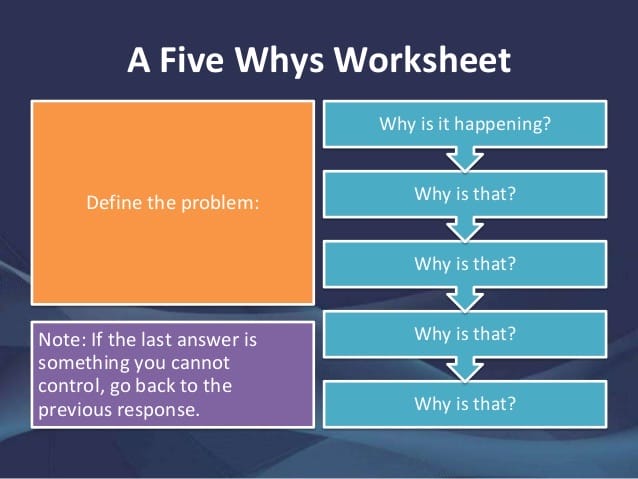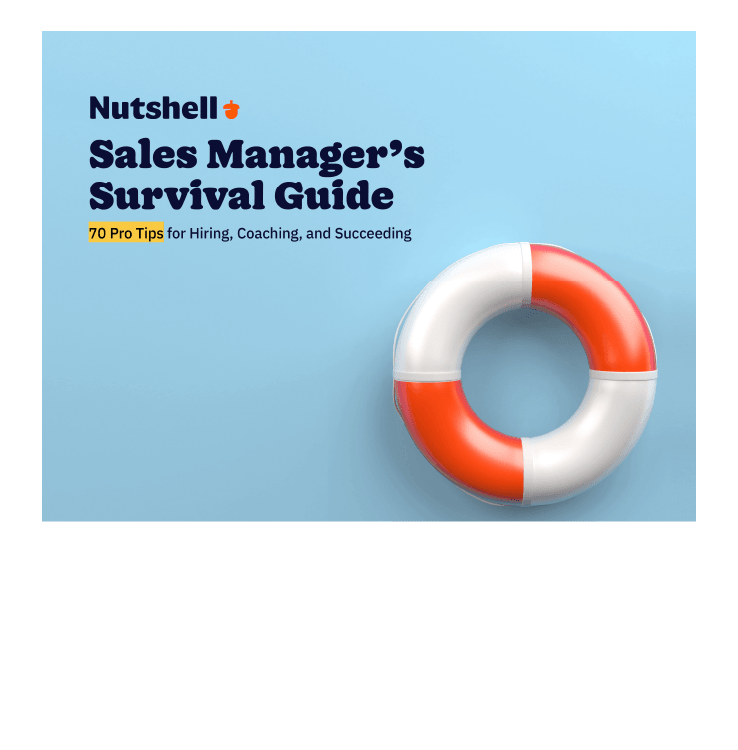
It’s a tale as old as time: Your sales team isn’t meeting its goals.
You thought you hired the right people and that everyone was a good fit for the company, so why aren’t they exceeding their quotas?
Sometimes the issue is the employees themselves, but many times something outside their control is to blame. We’ve compiled six of the best strategies for improving sales rep performance based on real-world research and case studies so you can get back to hitting your benchmarks in no time:
When your car breaks down, it usually isn’t the best idea to try replacing the transmission yourself without first consulting a mechanic. The same can be said of fixing an underperforming sales team. Determining the source of the problem is just as important as prescribing a solution.
One of the ways Toyota became the sixth-largest company in the world by revenue was through its tradition of asking “why” five times to get to the root of a problem. It’s a technique that has just as much usefulness in the sales room as on the factory floor.

Here’s an example of this in practice:
“My sales team isn’t meeting their quotas.”
1. Why aren’t they meeting their quotas?
“They aren’t closing enough sales.”
2. Why aren’t they closing enough sales?
“They always seem to be focused on closing deals but forget to fill the pipeline.”
3. Why aren’t they filling the pipeline?
“They dislike cold calling prospects.”
4. Why do they dislike cold calling?
“It takes a lot of time and effort to find interested potential customers.”
5. Why does it take a lot of time and effort?
“Because we don’t have a system for qualifying prospects before we call them.”
Whether you ask three times or ten times, persistently asking “why” helps you move past the flawed assumption that your sales team is underperforming because they are lazy or unskilled. Now you’re left with a problem that has a relatively straightforward solution.
As “Mr. Inside Sales” Mike Brooks put it, “you can’t close an unqualified lead.” One of the most common reasons why sales teams underperform is the lack of a formal prospect qualification process—or the lack of a sales process altogether.
Having a system for qualifying prospects eliminates the guesswork of who to pursue and who to say “no” to. Start by:
Once you have an automated process in place that identifies who is most likely to convert, your team can quickly follow-up and keep their pipeline full.
The Sales Manager’s Survival Guide includes 70+ expert tips on hiring, coaching, and motivating your sales team. Download it today!

In addition to qualifying leads, having a well-documented follow-up process prevents a rep from wondering what to do next. A quality CRM platform can automate much of this process and remind your reps who they need to contact and when.
Related: How to write a killer follow-up sequence that draws replies
CRM platforms also make it possible for managers to track and analyze data around all the team’s accounts so that they can hone in on which follow-up strategies work and which ones don’t.
By establishing clear processes at every stage of the pipeline, your team has a better chance of performing consistently and meeting their sales goals.
After working in the field and seeing ineffective pay schemes for reps firsthand, Harvard Business School Associate Professor Doug J. Chung went on to study how companies should pay salespeople. His findings went against many of the ways that companies traditionally pay their reps.
For starters, Chung’s research suggests that many compensation strategies used by big companies, such as caps on commissions and increasing sales quotas for high-performing reps, may actually hurt long-term results.
He also supports the use of a pay system that is uniquely tailored for each individual, with different components and bonuses in place to keep high-performing, average, and low-performing reps engaged.
Related: 8 ways to retain your top sales reps (after they’ve gotten their bonuses)
Want to explore tailoring sales incentives for individual members of your team? Sales and management training company The Brooks Group suggests the following tangible and intangible incentives:
In every case, keep the personalities and preferences of your individual reps in mind. What motivates one person may turn another off.
Sales gamification is a common strategy for increasing productivity. However, outright competition isn’t always the most effective technique for team productivity.
In one case study, a company with an international sales group pitted reps targeting one country against reps selling to another. When one team began to pull ahead, the low-performing reps were quick to assume that the problem was the market in their target country. As a result, their motivation stalled.
The CEO’s solution? He took the highest performing reps from the star teams and sat them next to the reps of the low-performing countries. By being in close proximity to the high-performers and learning some of their sales techniques, teams were able to turn their productivity around and began outperforming within weeks.
Instead of investing in a gamification model that pits your sales reps against each other, consider prioritizing collaboration in order to close more deals. Cooperative sales culture is not only essential for maintaining a healthy, enjoyable work environment for your employees, it can also help increase the overall productivity of your team.
Your reps have likely heard a lot of feedback from customers—both good and bad—about the product or service they’re trying to sell. And let’s face it: No amount of sales finesse can truly make up for a flawed product. In this situation, your company may have to invest more into your product development and customer service team.
It might also be wise to take it one step further and ask your sales team for feedback during product development. They’ve been on the front lines and likely have an intimate understanding of customer opinions and market trends.
Not only will your product or service better reflect customer needs, but reps will feel a little more ownership over your product offerings, which can translate into a more authentic and effective sales experience.
Having an underperforming sales team can be a frustrating situation, but turning things around is often easier than you think. Getting to the root of the problem and taking a creative approach to fixing obstacles for your team can quickly deliver the results you’re looking for.
Investing time into exploring the causes of your team’s performance will pay dividends. It will also lay the foundation for better processes and company culture that will remain long after your current reps have moved on and new employees join your team.

Join 30,000+ other sales and marketing professionals. Subscribe to our Sell to Win newsletter!